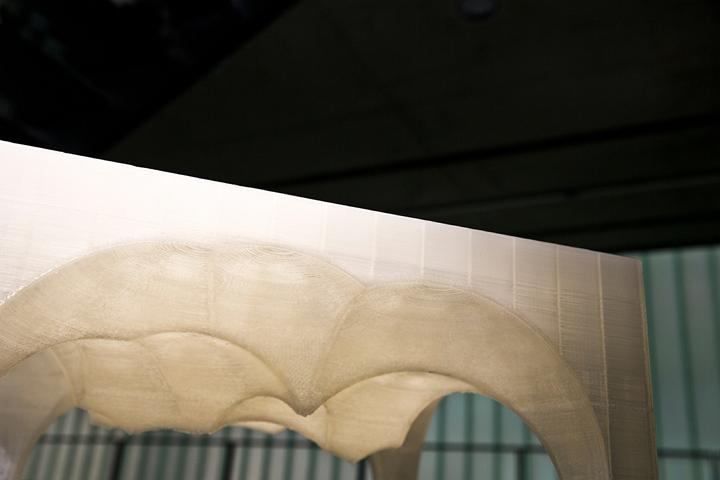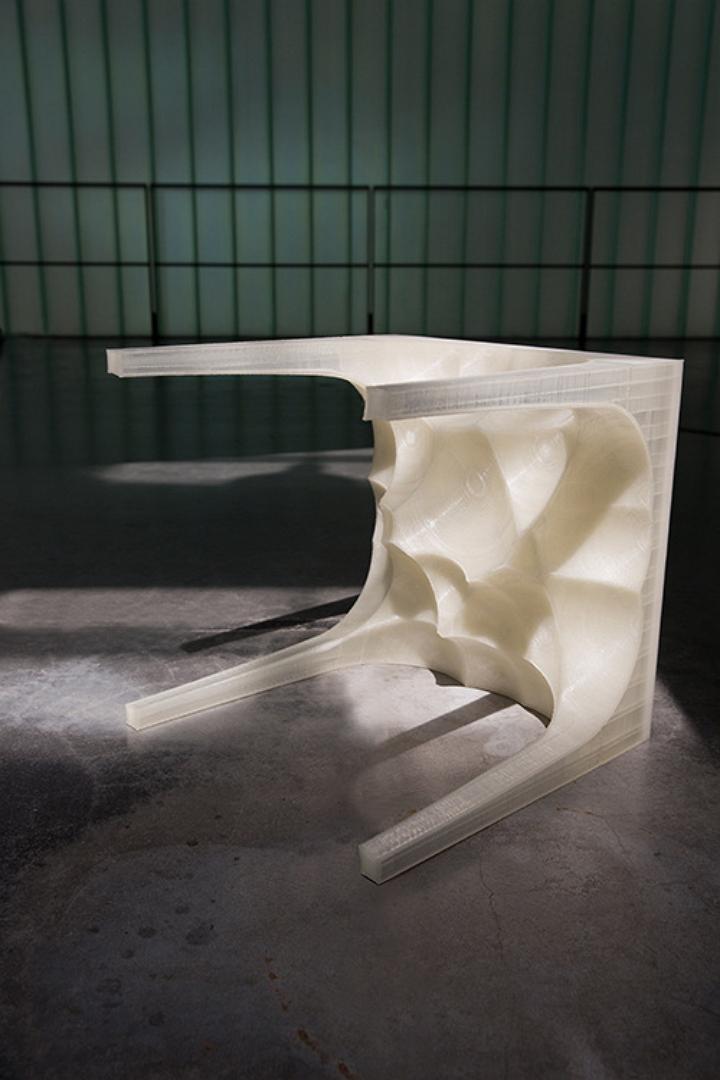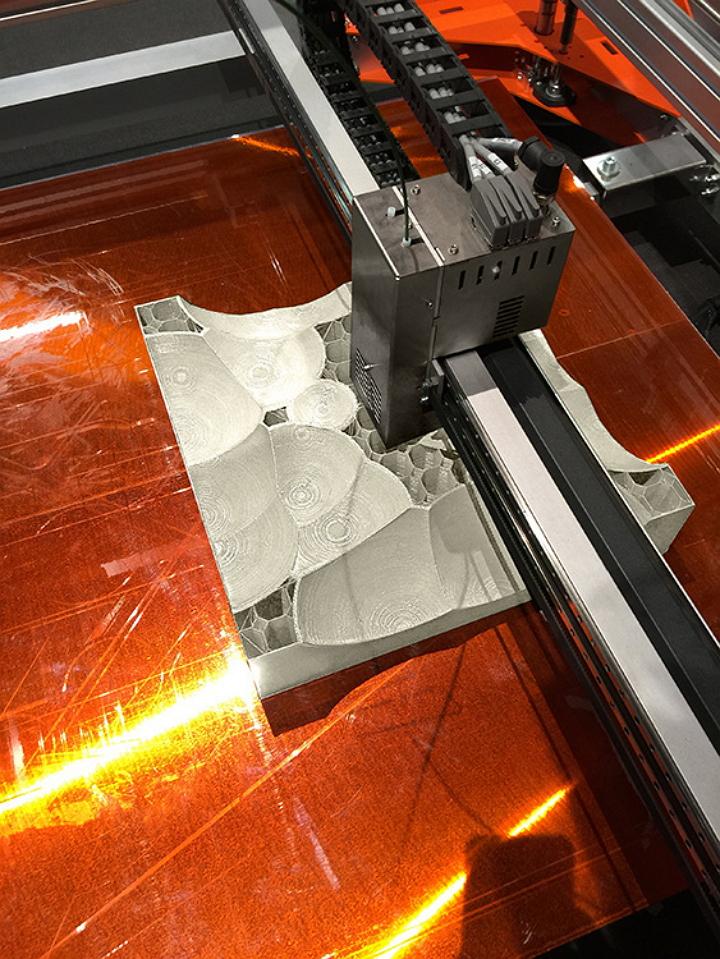 The Mendenhall Glacier in Alaska is famous for its magnificent ice caves, but it also serves as a bellwether of how the climate of Earth is in flux.
The Mendenhall Glacier in Alaska is famous for its magnificent ice caves, but it also serves as a bellwether of how the climate of Earth is in flux.
Some 3,000 years ago and ending in the mid-1700s, the glacier had reached its point of maximum advance nearly two and a half miles from where it now terminates. The glacier began retreating as its annual rate of melt began to exceed its total annual accumulation, and as the ice retreats and uncovers bare rock, the wind and melt result in the spectacular forms which serve as the ceilings of the caves.
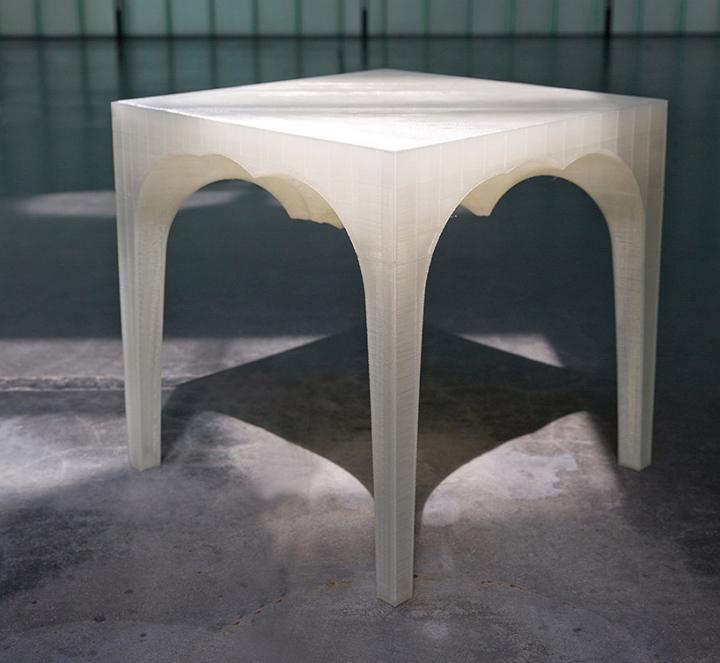 German design firm NOWlab says they began an ongoing research project to study these glaciers’ natural evolution in their applications with the idea of creating products which reflect the processes at work there.
German design firm NOWlab says they began an ongoing research project to study these glaciers’ natural evolution in their applications with the idea of creating products which reflect the processes at work there.
Their Glacier is a 100% recyclable and biodegradable sculptural table meant to represent a new paradigm for product development and construction.
Founding partners Jörg Petri and Daniel Büning established NOWlab in 2014. Petri was an associate architect and project leader at UNStudio in Amsterdam, and was Büning investigating novel digital solutions for the design, simulation and fabrication of 3D printed architectural elements.
With Glacier, the pair say they wished to integrate three-dimensional, periodic microstructures in the table to provide structural performance and light weight. They used computer simulations to account for the locations of peak stress points within the table, and they adjust the geometry of the design to handle those forces. 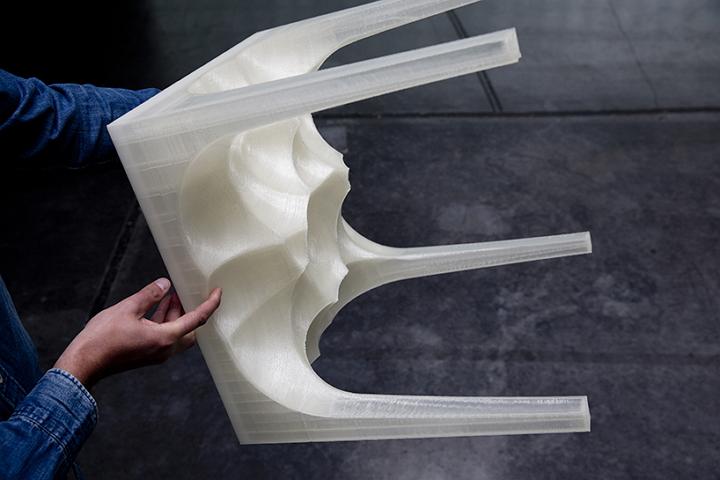
Working in cooperation with BigRep and using that company’s ONE.2 printer, the designers build each of the tables entirely with the 3D printing process. The ONE.2 printer is capable of building objects up to 1m³, and the table itself is made from biodegradable plastic.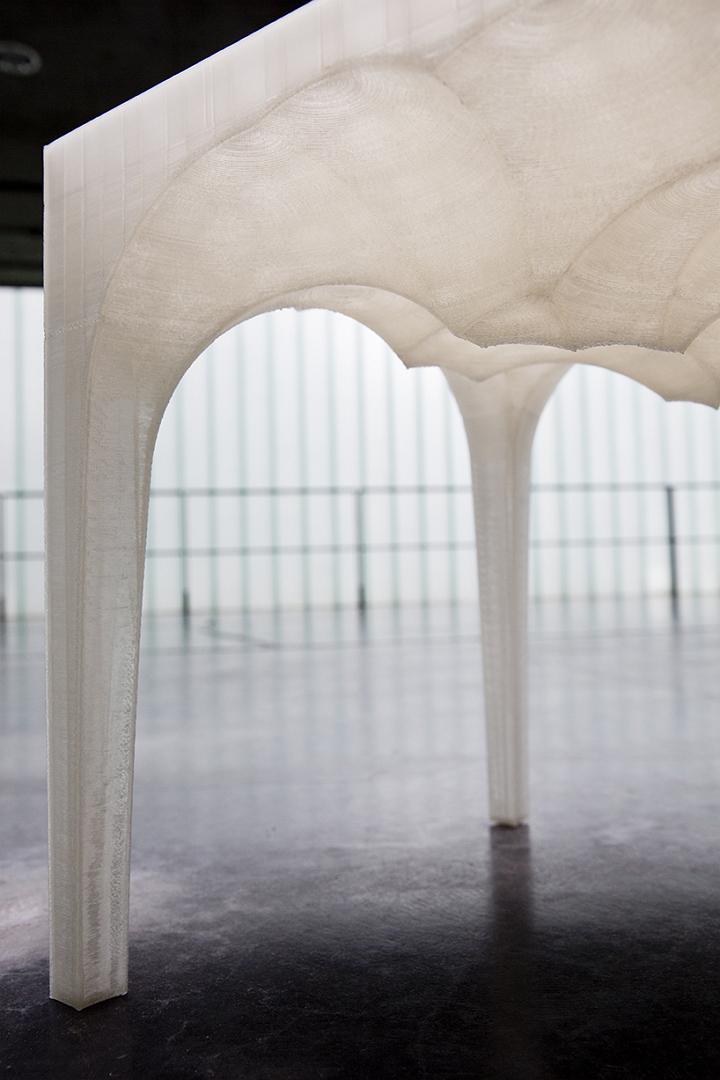
“The processes of material layering over time, respectively layers of snow compacting, becoming ice and being melted to water eventually evaporating and becoming clouds are the fragile stages of this fascinating and complete cycle of nature,” the designers say of their manufacturing choice. “The ‘GLACIER’ therefore stands for the idea of the optimum material cycle. It is created through an additive production process where material is added over time in a layer-by-layer manner without further molds or additional scaffolding material necessary. The biodegradable material used in this design can be 100% recycled and melted again to produce another material formation of different function.”
Petri and Büning say they hope the project “opens the gateway to a new dimension of 3D printing and 3D manufacturing” and that the technology allows them to produce furniture pieces on demand and ready to use.
Have you ever visited the Mendenhall Glacier or purchased any 3D printed furniture? Let us know in the 3D Printed Glacier Table forum thread on 3DPB.com. Check out more photos of the table and 3D printers used below.
Subscribe to Our Email Newsletter
Stay up-to-date on all the latest news from the 3D printing industry and receive information and offers from third party vendors.
Print Services
Upload your 3D Models and get them printed quickly and efficiently.
You May Also Like
The Dental Additive Manufacturing Market Could Nearly Double by 2033, According to AM Research
According to an AM Research report from 2024, the medical device industry, specifically in dentistry, prosthetics, and audiology, is expected to see significant growth as these segments continue to benefit from...
Heating Up: 3D Systems’ Scott Green Discusses 3D Printing’s Potential in the Data Center Industry
The relentless rise of NVIDIA, the steadily increasing pledges of major private and public investments in national infrastructure projects around the world, and the general cultural obsession with AI have...
AM Research Webinar Explores Continuum’s Sustainable Metal Additive Manufacturing Powders
Metal additive manufacturing (AM) powder supplier Continuum Powders is working to develop solutions that empower industries to reduce waste and optimize their resources. An independent life cycle assessment (LCA) of...
3D Printed Footwear Startup Koobz Lands $7.2M in Seed Round
California-based Koobz is focused on reshoring the U.S. footwear supply chain with advanced manufacturing processes, including 3D printing. The startup just announced that it has added $6 million to its...


